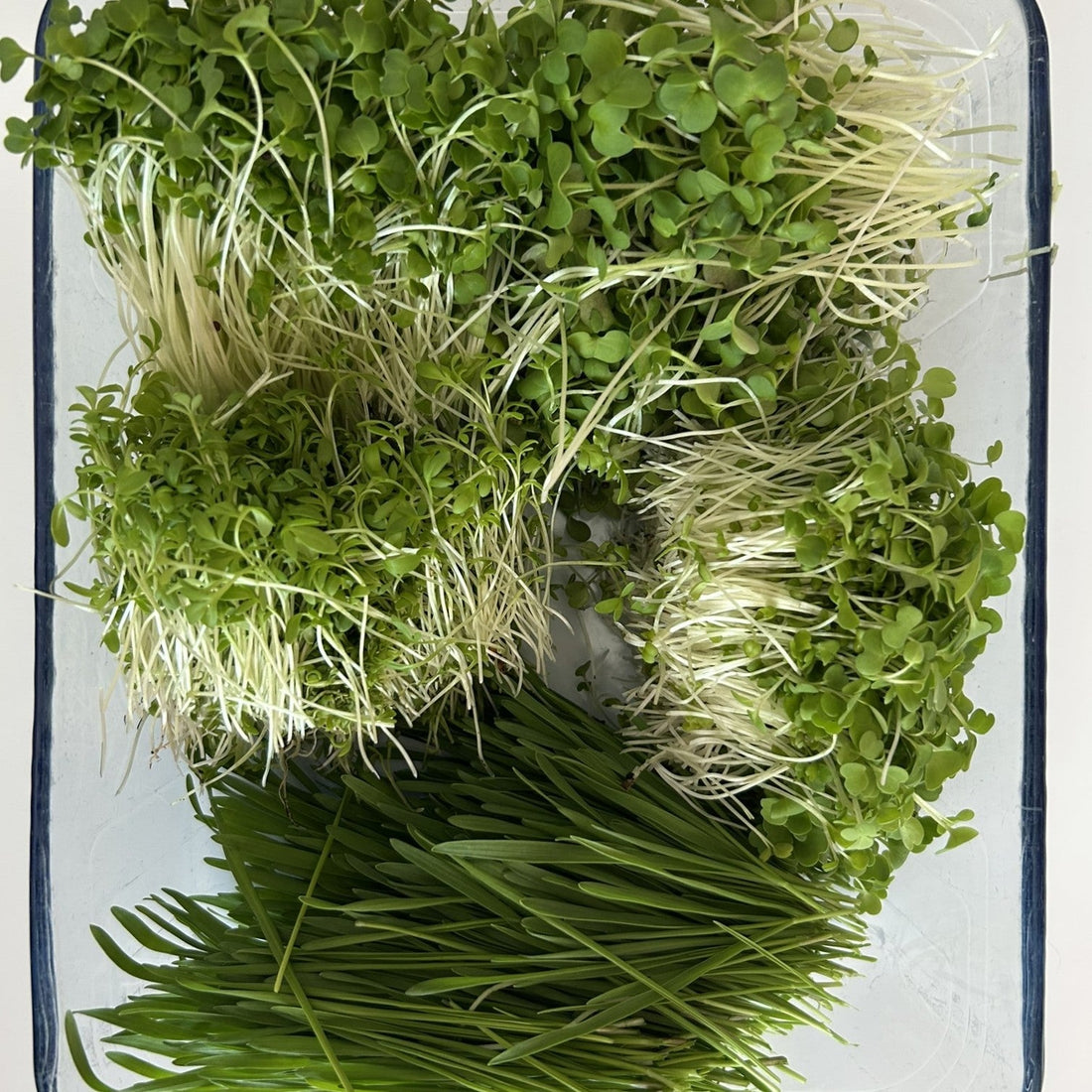
What is the difference between microgreens, cress and sprouts?
What is the difference between microgreens, cresses, sprouts and sprouts?
Many people use the terms microgreens , sprouts , cresses and sprouts interchangeably. That makes sense, because they look similar: young plants that you can eat, often full of flavor and packed with nutrients. But if you look at how they are grown and used, there are indeed differences. In this blog we explain what those differences are — and why it sometimes doesn't matter which word you use.
Why so much confusion?
In the supermarket or online, you often see the terms mixed up. Whether you search for microgreens , sprouts or cresses , you often end up with the same products: small, edible plants that are mainly harvested young. For consumers, it often simply means “small, healthy plants” — without knowing exactly how they were grown or what they are officially called.
But if you start growing it yourself or talk to chefs, you will notice that there are differences.
The differences in a row
✅ Sprouts
Sprouts are the very first shoots that come from a seed. Think of bean sprouts, alfalfa or radish sprouts. They are grown without soil or growing medium , usually only in water, and often without light . You eat both the root and the young shoot.
✅ Microgreens
Microgreens are the next growth stage: young plants that already have their first leaves (the so-called cotyledons ). They are grown with light , often on a substrate such as coconut fiber, and you only eat the top part (the leaves and stems, not the roots). Microgreens often have a stronger, more concentrated flavor than sprouts.
✅ Cresses
Cress is actually a marketing name, especially in the catering industry. Well-known brand: Koppert Cress . Cress is actually microgreens, but often from specific plants with pronounced flavors, such as mustard cress, radish cress or shiso cress. Chefs mainly use them as a flavoring or garnish.
✅ Sprouts (English term)
Note: In English, “sprouts” actually means the same as “sprouts.” However, people sometimes use it loosely to refer to microgreens, which can cause additional confusion.
When does it matter which word you use?
When you’re in a store or online shop, it doesn’t always matter what word is on it — you’re probably getting a product that you can grow into tiny, edible plants. But if you:
🌱 Want to grow yourself → microgreens and sprouts require a different approach. You grow sprouts in a pot of water, microgreens in a bright spot with a grow mat or soil.
👨🍳 For recipes, chefs often mean specific flavors when they say “cresses,” not just any microgreens.
🛒 Buying seeds → check whether you are buying microgreen seeds or sprout seeds, as they sometimes differ in variety or treatment (for example, whether they are untreated).
Conclusion: often the same thing meant, but there are differences in detail
Although the terms are often used synonymously, there are technical differences. If you look into it, you will notice that sprouts are mainly the first phase, microgreens are the second phase, and cresses are a specialized form for the catering industry. For the average consumer, it doesn't matter that much, but if you are serious about growing or experimenting in the kitchen, it pays to know the difference!
